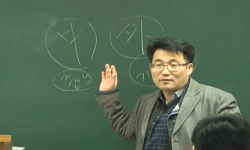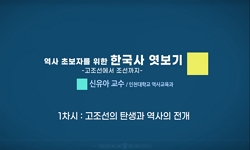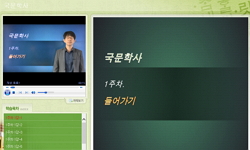Maitreya Buddha, the Future Buddha following S´a ̄kyamuni Buddha, is one of the most representative statues in the Mahayanist Buddhism. It is admitted that Maitreya Religion has been begun in 200 BC. and Maitreya statue has been made in the 200 AD. ...
http://chineseinput.net/에서 pinyin(병음)방식으로 중국어를 변환할 수 있습니다.
변환된 중국어를 복사하여 사용하시면 됩니다.
- 中文 을 입력하시려면 zhongwen을 입력하시고 space를누르시면됩니다.
- 北京 을 입력하시려면 beijing을 입력하시고 space를 누르시면 됩니다.
高麗時代 彌勒圖像의 硏究 : 契印形 佛·普薩像을 中心으로 = Study on the pattern of maitreya statue during the Koryo dynasty : Concentrated on the statues of buddha and bodhisattva of holding object
한글로보기https://www.riss.kr/link?id=T9645244
- 저자
-
발행사항
서울 : 東國大學校 大學院, 2002
- 학위논문사항
-
발행연도
2002
-
작성언어
한국어
- 주제어
-
KDC
629.2 판사항(4)
-
발행국(도시)
서울
-
형태사항
161p. : 삽도, 도판 ; 26cm.
-
일반주기명
참고문헌: p. 115-122
- DOI식별코드
- 소장기관
-
0
상세조회 -
0
다운로드
부가정보
다국어 초록 (Multilingual Abstract)
Maitreya Buddha, the Future Buddha following S´a ̄kyamuni Buddha, is one of the most representative statues in the Mahayanist Buddhism. It is admitted that Maitreya Religion has been begun in 200 BC. and Maitreya statue has been made in the 200 AD.
The original pattern of Maitreya statue in the early India, Buddhism's birthplace, has characteristics in holding kam.and.lu(淨甁) on the left hand and with topknot-type hairstyle. However, this pattern has been changed during Gupta Dynasty and Pala Dynasty. There had been stupa on the crown and na ̄gapus.na flower(龍華) on the hand instead of kam.and.lu.
As for Maitreya image in the Central Asia, intermediary region of Buddhist art, it wasn't differentiated much from early indian style. However, it's image was changed from ascetic to governor and this style had been continued to the sculpture of China. It is noticeable that there remains prototype statue of na ̄gapus.na flower mudra ̄(龍華印) among early Maitreya statues there.
In the case of Korea, several Buddhist images with holding objects were produced during the Three Kingdoms period and estimated as Maitreya statue. However, there needs more consideration about this from now on.
During the Koryo Dynasty, sculpturing Buddhist statue became more popular and its activities was spreaded to the central region of the country focusing on its capital Gaegyeong, out of Kyeongju province. Furthermore, the sculpture had been made in many variable styles differently from former sculpture style. As the result, Maitreya sculpture during the time also became to contain new characteristics. In general, there were square or octagonal crowns and na ̄gapus.na flower or kam.and.lu on the sculpture. Furthermore, it's clothes was the same as Buddhist's although it was made as Bodhisattva. I consider that the style was closely related to Maitreya.
Maitreya sculpture of Koryo Dynasty was mostly made and leaded by Bub-sang school. Bub-sang school(法相宗) was one of the four representative Buddhism sects at the time and it gave prevailing influence on the society. Hyeonhwa-sa was the head temple of the sect and the main Buddha were Maitreya and Amitabha Buddha transmitted directly from Shilla Dynasty's religious tradition. Therefore, it could be affect largely to the other Bub-sang school temples. Consequently, Maitreya sculpture had been made leaded by Beopsang-jong temple during Koryo dynasty. Besides, Cheontae-jong(天台宗) and Zen Buddhism(禪宗) and Folk religion also worshiped Maitreya Buddha at the time.
I consider that Maitreya's the most popular holding object during the Koryo Dynasty, na ̄gapus.na flower, described implicitly the Three Assemblies of Maitreya which the story about Maitreya's sermon coming down from Tus.ta to na ̄gapus.na tree(龍華樹). Increase of Maitreya sculpture at the time is closely related to the fact that the statue pattern during Gupta and Pala dynasty was established late in India. So, It is possible that the style also influenced relatively late to the Koryo Maitreya statue. The na ̄gapus.na mudra ̄ also has been sculptured continuously until Chosun Dynasty. Maitreya sculpture had Bodhisattva character wearing Buddha's clothes with imperial or stupa style crown representing imperial power. The presence of this style represents that Maitreya Buddha came down to the mundane world along with cakravartin(轉輪聖王). The reason why its clothing was the Buddha's one is to express the climb belief and the appearance belief(上·下生信仰) of Maitreya. Moreover, stupa style crown which similar to a tower shape has possibility that it was based on the Esoteric Buddhism Sutras such as 《Eight Bodhisattva Mandala Sutra》(八大菩薩曼茶羅經) translated by Amogha-vajra(不空)and interpreted it in Koryo viewpoint and configured its motive as a sculpture. I consider that it was affected by Four-lion-supported three storied
stone pagoda(四獅子石塔) of Hwaeom-sa temple as well.
Kam.and.lu, a important holding object since India's early sculpture, had been applied during Koryo dynasty, too. Kam.and.lu is a symbol standing for Brahman class and Maitreya is also included in the class as a Brahman's descendant. Kam.and.lu became a important symbol as a Maitreya's holding object. I consider that the kam.and.lu either one containing Ojibeopsu(五知法水) into it to give Vya ̄karan.a(授記) to mundane people who participated in Younghwahaesang(龍華會上), or the other as a holding object symbolizing messiah namely the Future Buddha. At the same time, it reflects strong aspiration for Maitreya Buddha world by purifying disordered mundane world.
Maitreya sculpture of Koryo Dynasty was expressed in abstract and voluminous style. Such a abstract style was suitable for expressing Maitreya's pure land ruling by cakravartin. This style is one of the two important sculpture style along with traditional style which succeeded Shilla dynasty's sculpture style.
목차 (Table of Contents)
- 목차
- Ⅰ. 머리말 = 1
- Ⅱ. 彌勒信仰의 性格 및 彌勒圖像의 展開 = 4
- 1. 彌勒信仰의 性格 = 4
- 2. 彌勒圖像의 起源과 展開 = 9
- 목차
- Ⅰ. 머리말 = 1
- Ⅱ. 彌勒信仰의 性格 및 彌勒圖像의 展開 = 4
- 1. 彌勒信仰의 性格 = 4
- 2. 彌勒圖像의 起源과 展開 = 9
- Ⅲ. 高麗時代 彌勒像의 造成背景 = 28
- 1. 法相宗의 彌勒信仰 = 28
- 2. 天台宗의 彌勒信仰 = 37
- 3. 禪宗의 彌勒信仰 = 41
- 4. 在來의 彌勒信仰 = 45
- Ⅳ. 高麗時代 彌勒像의 形式 = 48
- 1. 倚坐像 = 48
- 2. 龍華印 彌勒像 = 50
- 3. 淨甁印 彌勒像 = 68
- Ⅴ. 高麗時代 彌勒像의 圖像特徵 = 72
- 1. 手印 = 72
- 가. 龍華印 = 72
- 나. 淨甁印 = 81
- 2. 寶冠 = 86
- 3. 着衣法 = 90
- 4. 姿勢 = 92
- 5. 配置形式 = 94
- Ⅵ. 高麗時代 彌勒像의 樣式的 特徵 및 編年 = 97
- 1. 傳統樣式 = 98
- 2. 石柱樣式 = 104
- Ⅶ. 맺음말- 高麗時代 彌勒像의 彫刻史的 意義 = 111
- -참고문헌- = 115
- <도판목록> = 123
- Abstract = 159












